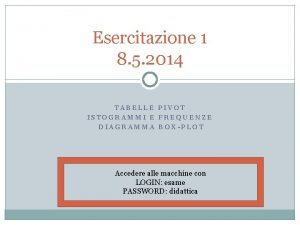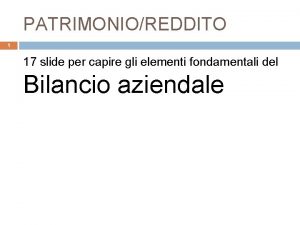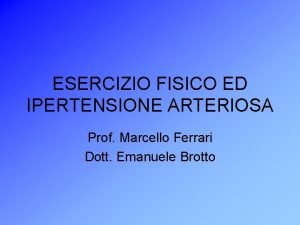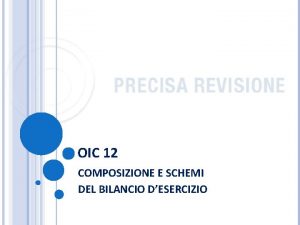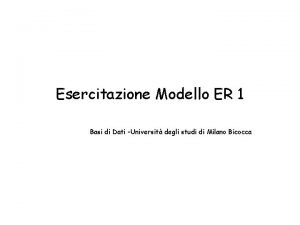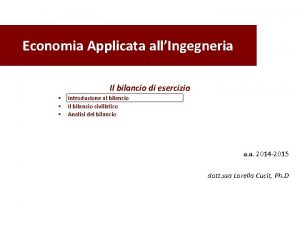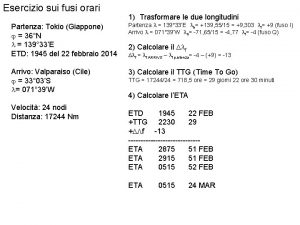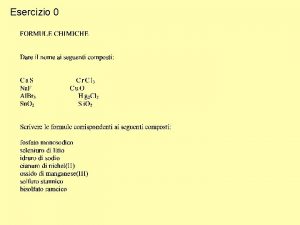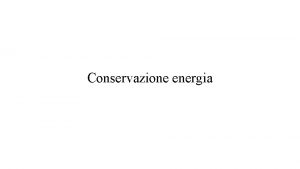Esercizio no 2 Si realizzino i seguenti montaggi









- Slides: 9

Esercizio no 2 • Si realizzino i seguenti montaggi basati sull’amplificatore operazione 741 e se ne descriva il funzionamento: – amplificatore invertente – integratore o derivatore • Si caratterizzino in modo quantitativo gli ampificatori al variare della frequenza del segnale in ingresso • Si verifichi la banda passante di uno dei due amplificatori al variare del guadagno

UCSD: Physics 121; 2012 Inverting amplifier example R 2 R 1 Vin + Vout • Applying the rules: terminal at “virtual ground” – so current through R 1 is If = Vin/R 1 • Current does not flow into op-amp (one of our rules) – so the current through R 1 must go through R 2 – voltage drop across R 2 is then If. R 2 = Vin (R 2/R 1) • So Vout = 0 Vin (R 2/R 1) = Vin (R 2/R 1) • Thus we amplify Vin by factor R 2/R 1 – negative sign earns title “inverting” amplifier • Current is drawn into op-amp output terminal Winter 2012 2

UCSD: Physics 121; 2012 Non-inverting Amplifier R 2 R 1 Vin + Vout • Now neg. terminal held at Vin – so current through R 1 is If = Vin/R 1 (to left, into ground) • This current cannot come from op-amp input – – – so comes through R 2 (delivered from op-amp output) voltage drop across R 2 is If. R 2 = Vin (R 2/R 1) so that output is higher than neg. input terminal by Vin (R 2/R 1) Vout = Vin + Vin (R 2/R 1) = Vin (1 + R 2/R 1) thus gain is (1 + R 2/R 1), and is positive • Current is sourced from op-amp output in this example Winter 2012 3

Noninverting amplifier Voltage follower Ref: 080114 HKN Noninverting input with voltage divider Less than unity gain Operational Amplifier 4

UCSD: Physics 121; 2012 Summing Amplifier Rf R 1 V 1 R 2 V 2 + Vout • Much like the inverting amplifier, but with two input voltages – inverting input still held at virtual ground – I 1 and I 2 are added together to run through Rf – so we get the (inverted) sum: Vout = Rf (V 1/R 1 + V 2/R 2) • if R 2 = R 1, we get a sum proportional to (V 1 + V 2) • Can have any number of summing inputs – we’ll make our D/A converter this way Winter 2012 5

UCSD: Physics 121; 2012 Differencing Amplifier R 2 R 1 V + V+ Vout R 1 R 2 • The non-inverting input is a simple voltage divider: – Vnode = V+R 2/(R 1 + R 2) • So If = (V Vnode)/R 1 – Vout = Vnode If. R 2 = V+(1 + R 2/R 1)(R 2/(R 1 + R 2)) V (R 2/R 1) – so Vout = (R 2/R 1)(V V ) Winter 2012 6

Differentiator (high-pass) C Vin R Vout 7

UCSD: Physics 121; 2012 Differentiator (high-pass) R C Vin + Vout • For a capacitor • So we have a differentiator, or high-pass filter Winter 2012 8

UCSD: Physics 121; 2012 Low-pass filter (integrator) C R Vin + Vout • If = Vin/R, so C·d. Vcap/dt = Vin/R – and since left side of capacitor is at virtual ground: – and therefore we have an integrator (low pass) Winter 2012 9
